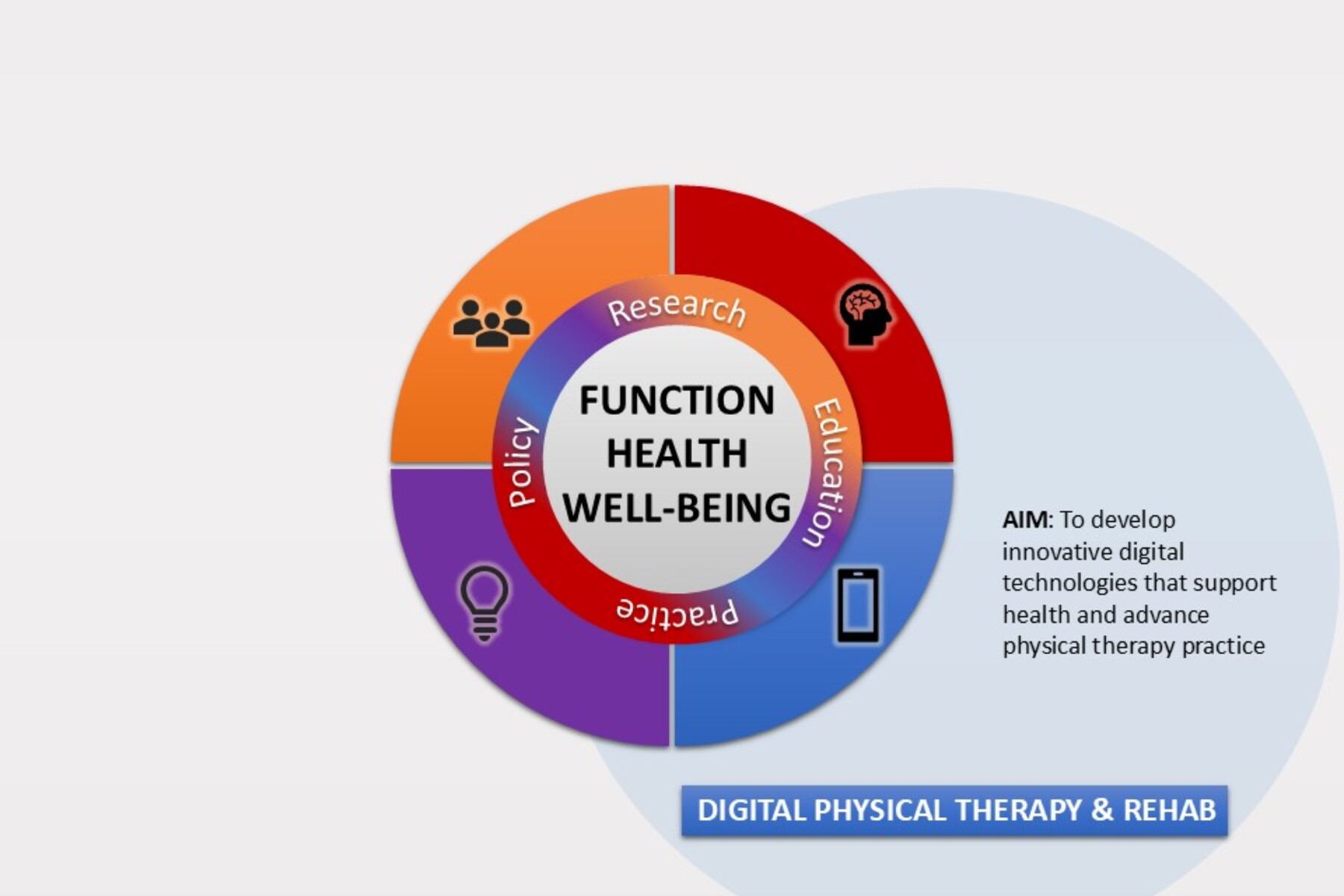Breadcrumbs
- Home
- Research
- Research Platforms
- Digital Physical Therapy and Rehabilitation
Digital Physical Therapy and Rehabilitation

The aim of this platform is to generate and translate evidence involving innovative digital, online, and/or artificial intelligence (AI) technologies for advancing education and implementation of rehabilitation assessment and interventions. This aim is addressed by:
- Developing mobile health solutions and technologies to advance implementation of recommended rehabilitation assessments and treatments, patient education, and healthy living;
- Developing effective approaches for the online delivery of rehabilitation, community-based exercise, and physical activity interventions;
- Validating electronically administered patient-reported outcome measures (PROMs) and web administered performance-based rehabilitation assessment tools
- Developing and evaluating online physical therapy education.
This platform encompasses emerging advances in digital/online approaches to clinical practice, education, and research. This platform includes using implementation science approaches to assess the accessibility, acceptability, effect, fidelity, adoption, feasibility, and sustainability of virtually delivered interventions. Findings are of benefit to physical therapy learners and practitioners, and people living with HIV, spinal cord injury, stroke, and other chronic health conditions.
Programs of Research and Faculty
- Pressure Injury Prevention and Management - Sharon Gabison
- Rehabilitation Health Services Outcomes and Evaluation - Susan Jaglal
- Spinal Cord Injury Mobility Lab - Kristen Musselman
- Episodic Disability and Rehabilitation Research - Kelly O’Brien
- Rehabilitation of the Lower Extremities After Neurological Injury (RELEARN) Lab - Kara Patterson
- Rehabilitation Aimed at Muscle Performance (RAMP) Lab - Darlene Reid
- Knowledge to Action (KTA) Mobility Lab- Nancy Salbach
- Responsible Health Innovation Lab - Jay Shaw
- Cardiopulmonary Tele-Rehabilitation & Remote Monitoring Lab - Lisa Wickerson
- Biomedical Informatics, Analytics, and Technology Lab - Karl Zabjek
- Education Scholarship - Martine Quesnel, Sharon Switzer-McIntyre, Euson Yeung
Peer-Reviewed Publications: Digital PT & Rehab
- Assessing the implementation of online community-engaged self-management interventions to enhance health outcomes for people living with spinal cord injury (Susan Jaglal)
- Implementation of an online (tele-coaching) community-based exercise intervention among adults aging with HIV (Kelly O’Brien)
- Experiences of physiotherapists working with adults living with Long COVID (Kelly O’Brien)
- The use of a mobile educational tool on pressure injury education for individuals living with spinal cord injury/disease (Sharon Gabison)
- Lessons learned from experiences of Ontario physiotherapists on the delivery of telehealth physiotherapy for outpatient/community physiotherapy services during the 2020 COVID-19 pandemic (Sharon Gabison)
- iWalkAssess, a mobile application designed to help physical therapists to administer and interpret performance on functional walk tests in people with stroke (Nancy Salbach)
- Canadian Stroke Best Practice Recommendations: Virtual stroke rehabilitation consensus statement 2022 (Nancy Salbach)
- Developing an innovative evidence-based virtual concussion exam for family physicians (Charlotte Anderson)
- Digital Health and Equitable Access to Care (James Shaw)
- Protocol for a single group, mixed methods study investigating the efficacy of photovoice to improve self-efficacy related to balance and falls for spinal cord injury (Kristin Musselman)
- In-Person Versus Remote 6-Minute Walk and Incremental Shuttle Walk Distances in Advanced Lung Disease (Lisa Wickerson)